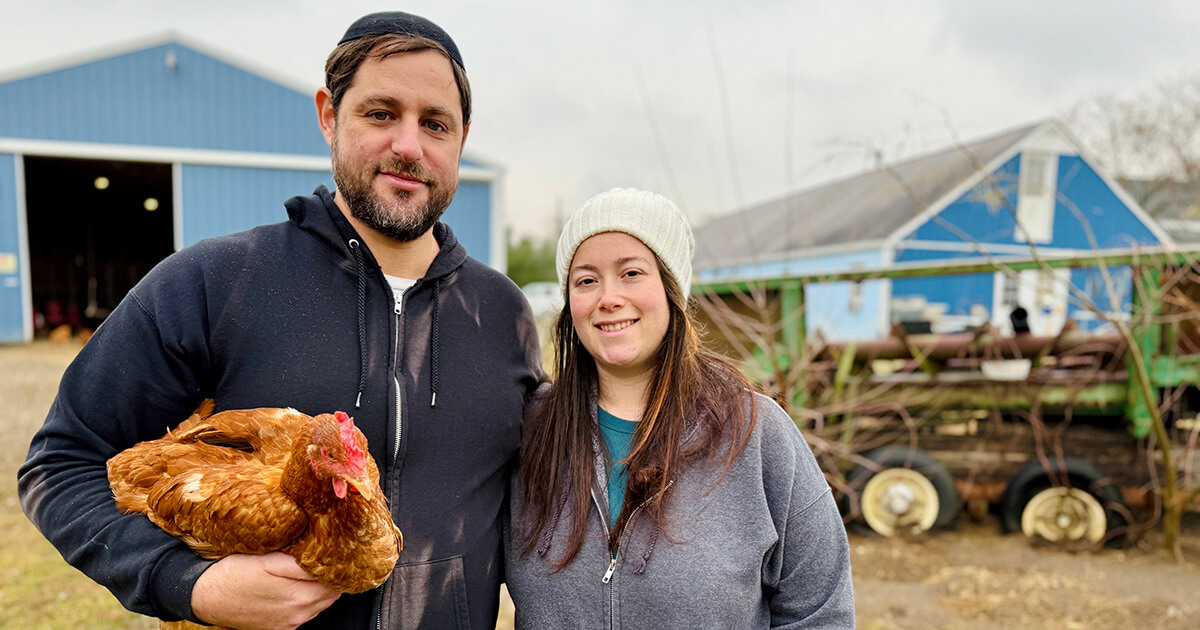In San Francisco, Jews stand with mayor against opening houses of worship too soon

Graphic by Angelie Zaslavsky
Religious groups that are pushing San Francisco to open up houses of worship to more congregants are doing so without the support of one faith group: Jews.
After the United States Department of Justice sent a stern letter to San Francisco Mayor London Breed saying that her ban on indoor worship services, “raises serious concerns about religious freedom … and may violate the First Amendment to the Constitution,” the mayor announced that the city’s 800 churches, synagogues and mosques would be permitted to reopen at 25 percent of capacity or up to 100 congregants.
But the city’s rabbis are saying that until there is a vaccine against COVID-19, the majority of their congregations much prefer outdoor or virtual services.
“People are comfortable gathering outdoors,” said Rabbi Joel Landau of the Orthodox Adath Israel congregation. “The interesting debate that will exist in my congregation is whether people will be comfortable going indoors. This is going to be a potentially divisive issue.”
Rabbi Shlomo Zarchi of Congregation Chevra Thilim, another Orthodox congregation in the city, surveyed his members about whether they would feel comfortable attending services indoors at 25% of occupancy.

Rabbi Shlomo Zarchi
“An overwhelming number said they would prefer outdoors,” Zarchi said.
Zarchi said many of his congregants preferred sitting on the sidewalk outside the synagogue facing the open doors of the sanctuary.
“On Rosh Hashanah we had people standing on the other side of the street – not standing next to anyone — so they could hear the shofar from 100 feet away,” he said.
At Congregation Emanu-El, the city’s 2,000-family Reform congregation whose main sanctuary holds 1,900 seats, David N. Goldman, the executive director and general counsel, said the congregation “has generally been very pleased with how the city has handled it and is not pushing for any special treatment. We always felt that the city was trying to do their level best and felt they were treating religious institutions fairly.”
Asked about indoor services now that they are permitted, Goldman said the congregation was “looking forward” to them sometime in the near future — but not soon.
“Whether we go to the maximum we are allowed I’m not sure,” he said. “We always take a more prudent approach.”
On Sept. 10, Breed had said the city’s “goal” was to permit indoor religious services up to 25% of capacity or a maximum of 25 people on Sept. 30. In its Sept. 25 letter, the Justice Department said that was insufficient because it would “continue to burden religious exercise severely and unnecessarily.” The department asked that the city change its rules “to bring them in line with the Constitution and our nation’s best traditions of free religious exercise.”

San Francisco Mayor London Breed Image by Wiki Commons
Michael G. Pappas, executive director of the San Francisco Interfaith Council, said city officials told him they had increased the numbers because the COVID-19 infection rate in San Francisco decreased since the earlier guidance was issued. He said the earlier guidance was developed when the city was in the red tier daily infection rate, which meant it was between four and seven infections per 100,000 residents. But the city is now in the orange tier, meaning daily infections are now between one and four cases per 100,000 residents for a positive test rate of between two and five percent.
“Since late February we have been in a state of emergency and have been cautiously moving forward,” said Pappas. “Communities of faith were not being punished by what was happening. What was done was an attempt to protect congregants.”
In a statement, San Francisco City Attorney Dennis Herrera criticized the Justice Department’s letter, saying the city now has the “lowest COVID-19 death rate of any major city in the country – we must be doing something right. Maybe the federal government should focus on an actual pandemic response instead of lobbing careless legal threats. San Francisco is opening up at the speed of safety.”
At least one critic said it is the city, not the federal government, that is politicizing the pandemic.
Even with the new regulations permitting indoor worship services, Rabbi Zarchi said he recognizes “that until there is a vaccine, a significant number of our congregants will not go to indoor services.”
His congregation’s Kol Nidre services, the rabbi pointed out, were held before the holiday began, on Zoom.















